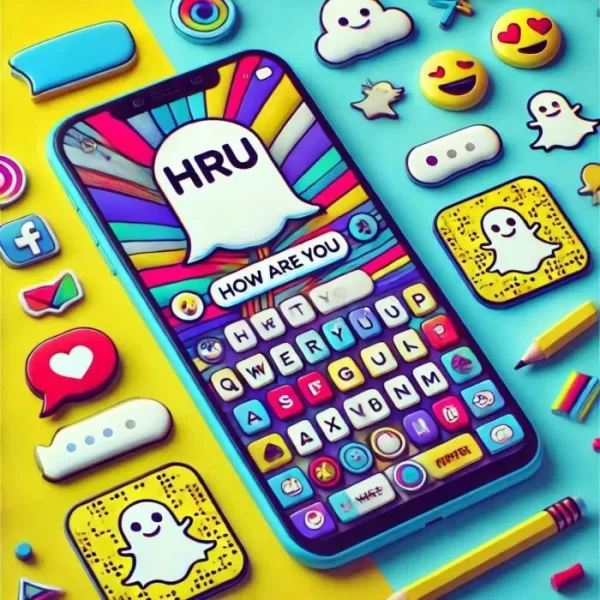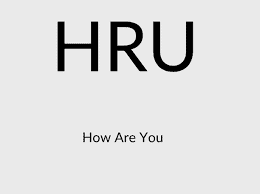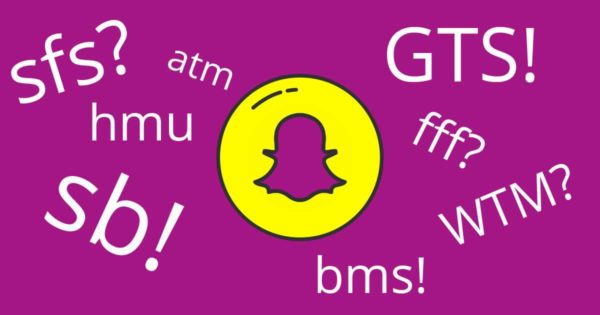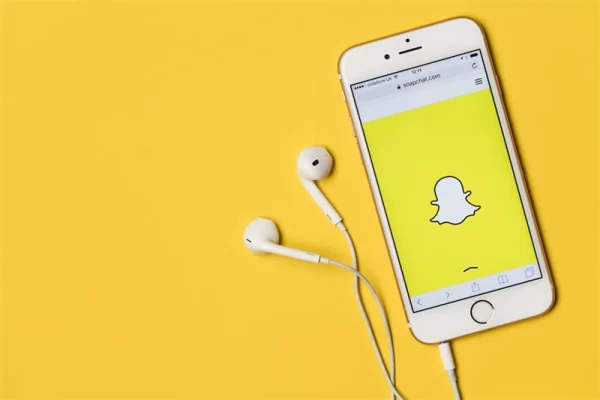Snapchat, like many social media platforms, has developed its own unique language and set of abbreviations. This “Snapchat lingo” helps users communicate quickly and efficiently within the app’s fast-paced environment. For newcomers to the platform, deciphering these shorthand expressions can be challenging.
This article will delve deep into the meaning, usage, and implications of HRU on Snapchat, which will help you to navigate through conversations with confidence.
What Does HRU Mean
At its core, HRU is a simple abbreviation that stands for “How are you?” It is an equivalent of the greeting we often use in face-to-face conversations. When someone sends you “HRU” on Snapchat, they’re simply asking about your well-being in general or your current state.
The abbreviation is typically used at the beginning of a conversation as an ice-breaker or a way to show interest in the other person’s life. It’s a casual, friendly question that doesn’t require an in-depth response but opens the door to take the conversation further.

The Origins And Evolution Of HRU
The exact origin of HRU is difficult to pinpoint, as it evolved alongside the broader text-speak culture that emerged with the rise of mobile phones and instant messaging. As people sought ways to type faster and conserve character space, abbreviations like HRU became commonplace.
Initially popular in SMS and early instant messaging platforms, HRU found a natural home on social media sites like Snapchat, where quick, casual communication is the norm.
Over time, it has become a staple in the digital world and is widely recognized across a lot of online platforms.
Why HRU Is Popular On Snapchat
Snapchat’s design and user base contribute significantly to the popularity of abbreviations like HRU. The app’s emphasis on quick, short communication that encourages users to keep their messages crisp and snappy. HRU fits perfectly into this ecosystem for several reasons:
- Efficiency: It’s faster to type three letters than “How are you?”
- Casualness: The abbreviation maintains a laid-back, friendly tone
- Universality: Most Snapchat users understand its meaning
- Conversation starter: It’s an easy way to initiate dialogue

When & How To Use HRU On Snapchat
While HRU is a versatile abbreviation, there are certain situations where it’s particularly appropriate:
- Starting a new conversation: HRU is an excellent opener when you want to chat with someone.
- Checking in with friends: Use it to show you care about your friends’ well-being.
- Resuming a conversation: If you haven’t talked to someone in a while, HRU can help break the ice.
- Responding to someone’s story: If a friend posts something interesting, you can use HRU to inquire about it indirectly.
Note: When using HRU, consider the context and your relationship with the recipient. While it’s generally casual, you might want to spell out “How are you?” in more formal situations or when talking to someone you don’t know well.
How To Respond To HRU: Best Practices
When someone sends you HRU on Snapchat, there are several ways to respond effectively:
- Be honest: Give a genuine answer about how you’re feeling.
- Keep it brief: A short response like “Good, thanks!” is often sufficient.
- Reciprocate: Ask how they’re doing in return, e.g., “I’m great, HBU?” (How about you?)
- Add context: If something significant is happening in your life, you can mention it briefly.
- Use emojis: A smiley face or other relevant emoji can add emotional context to your response.
Remember, the person asking HRU is usually looking to start a conversation, so your response will set the tone for further conversation.

HRU Variations & Alternatives
While HRU is common, there are several variations and alternatives that serve a similar purpose on Snapchat:
- HYD: “How you doing?”
- WUP: “What’s up?”
- SUP: “What’s up?”
- HBU: “How about you?” (often used in response to HRU)
- WRUD: “What are you doing?”
- HAY: “How are you?”
These alternatives can help you vary your greetings and adapt to different conversation styles or relationships.
The Psychology Behind HRU & Similar Greetings
The use of greetings like HRU goes beyond mere convention; it serves important psychological and social functions. When we ask “How are you?” or its abbreviated form, we’re engaging in what psychologists call “phatic communication” – language used for social purposes rather than to convey information.

This type of communication helps to:
- Establish and maintain social bonds
- Create a sense of connection and belonging
- Show care and interest in others
- Facilitate smoother social interactions
On Snapchat, where maintaining streaks and regular communication is often valued, HRU serves as a low-effort way to keep connections alive and show ongoing interest in one’s friends or acquaintances.
Conclusion
Understanding what HRU means on Snapchat is just the beginning of mastering the platform’s unique communication style. By familiarizing yourself with common abbreviations, knowing when and how to use them, and understanding their social implications, you can navigate Snapchat’s social landscape with confidence.
Remember that while efficiency is valued in digital communication, genuine connection remains the ultimate goal. Whether you use HRU, its variations, or opt for more traditional greetings, the key is to engage authentically with others on the platform.
 Gearfuse Technology, Science, Culture & More
Gearfuse Technology, Science, Culture & More


